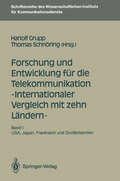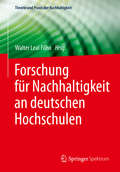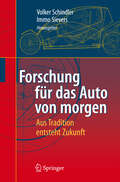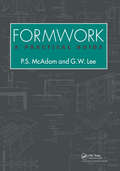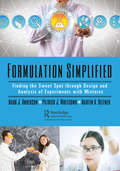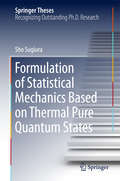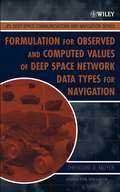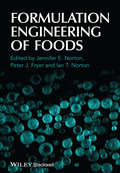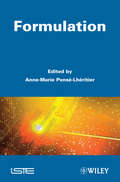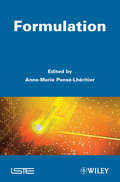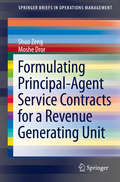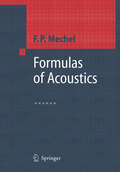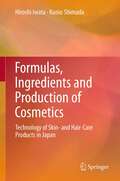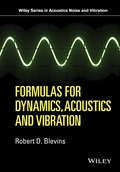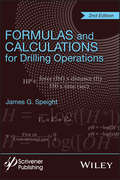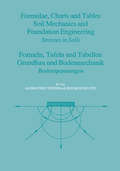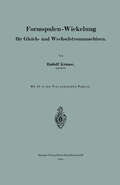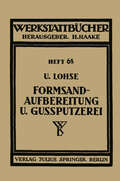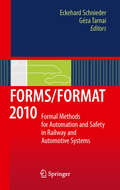- Table View
- List View
Forschung und Entwicklung für die Telekommunikation — Internationaler Vergleich mit zehn Ländern —: Band I: USA, Japan, Frankreich und Großbritannien (Schriftenreihe des Wissenschaftlichen Instituts für Kommunikationsdienste #9)
by Hariolf Grupp Thomas SchnöringDie vorliegende Studie untersucht das Forschungs- und Entwicklungssystem (FuE) für die Telekommunikation in zehn Ländern. Sie analysiert das Zusammenwirken von Staat, Netzträgern, Herstellern und Forschungseinrichtungen und entwickelt ein valides Bild von den nationalen FuE-Systemen und ihren Vor- und Nachteilen. Aus der vergleichenden Betrachtung der Systeme werden forschungs- und entwicklungspolitische und wettbewerbspolitische Schlußfolgerungen gezogen. Die Studie wird in zwei Bänden veröffentlicht, im ersten Band werden die Methoden der Untersuchung und die FuE-Systeme der Länder USA, Japan, Frankreich und Großbritannien dargestellt. Der zweite Band behandelt die Länder Italien, Spanien, Südkorea, Niederlande, Schweden und die Bundesrepublik Deutschland.
Forschung und Entwicklung für die Telekommunikation — Internationaler Vergleich mit zehn Ländern —: Band II: Italien, Spanien, Süd-Korea, Niederlande, Schweden, Bundesrepublik Deutschland und abschließende Bewertung (Schriftenreihe des Wissenschaftlichen Instituts für Kommunikationsdienste #10)
by Hariolf Grupp Thomas SchnöringDiese Studie untersucht das Forschungs- und Entwicklungs-System für die Telekommunikation in zehn Ländern. Sie analysiert das Zusammenwirken von Staat, Netzträgern, Herstellern und Forschungseinrichtungen und entwickelt ein valides Bild von den nationalen FuE-Systemen und ihren Vor- und Nachteilen. Aus der Zusammenschau der Systeme werden FuE-politische und wettbewerbspolitische Schlußfolgerungen gezogen. Die Studie wird in zwei Bänden veröffentlicht. Im ersten Band werden die Methoden der Untersuchung und die FuE-Systeme der Länder USA, Japan, Frankreich und Großbritannien dargestellt. Der zweite Band behandelt die Länder Italien, Spanien, Südkorea, Niederlande, Schweden und die Bundesrepublik Deutschland.
Forschung für Nachhaltigkeit an deutschen Hochschulen (Theorie und Praxis der Nachhaltigkeit)
by Walter Leal FilhoNachhaltigkeitsforschung hat in Deutschland eine lange Tradition und einen hohen Stellenwert. Dieses Buch diskutiert die Theorie und Praxis der Nachhaltigkeitsforschung, wobei die interdisziplinäre und vor allem bereichsübergreifende Forschung im Vordergrund steht. Es bietet ein Plattform, den neuesten Stand der Forschung sowie zukünftige Trends zu präsentieren. Die Autoren vermitteln Informationen und Erfahrungen über Forschungsprojekte im Bereich Nachhaltigkeit in Deutschland und stellen ausgewählte Forschungsansätze dar.Zum Themenspektrum gehören Bildung für nachhaltige Entwicklung (BNE) , nachhaltiges Management, Forschung für Nachhaltigkeit im Verbund, kommunale Anpassung an die Folgen des Klimawandels als Teil der nachhaltigen Entwicklung, Analyse regionaler Nachhaltigkeitsindikatoren, nachhaltiger Konsum, die Berücksichtigung der Nachhaltigkeit in der Entwicklung und Vermarktung von Konsumgütern und Projektentwicklung in der Nachhaltigkeitsforschung.Das Buch fördert den Erfahrungs- und Informationsaustausch zwischen Forschern und Wissenschaftlern aus Hochschulen, Forschungszentren, Firmen und sonstigen Einrichtungen, und ermögliche die Vorstellung von Projekten und Projektergebnissen.
Forschung für das Auto von morgen: Aus Tradition entsteht Zukunft
by Volker Schindler Immo SieversAn künftige Fahrzeuggenerationen werden ständig weiter steigende Anforderungen bezüglich Kraftstoffverbrauch, Sicherheit, Komfort, Zuverlässigkeit, Transportkapazität oder Betriebskosten gestellt. Detailliert beschreibt dieses Buch den aktuellen Stand der Entwicklung und Perspektiven für unterschiedliche Fahrzeugkategorien. Ein kompakter Einblick in moderne Methoden und Optimierungsmaßnahmen – auch für wissenschaftlich interessierte Leser.
Formwork: A practical guide
by Geoffrey LeeTo optimise formwork costs and minimise the time for its construction, the contractor needs to understand the guiding principles of safe and efficient formwork construction. He must also have some insight into the relative merits of the various methods, and should appreciate the practical details of formwork construction. This is a practical, heavi
Formulation Simplified: Finding the Sweet Spot through Design and Analysis of Experiments with Mixtures
by Mark J. Anderson Patrick J. Whitcomb Martin A. BezenerMany chemists – especially those most brilliant in their field – fail to appreciate the power of planned experimentation. They dislike the mathematical aspects of statistical analysis. In addition, these otherwise very capable chemists also dismissed predictive models based only on empirical data. Ironically, in the hands of subject matter experts like these elite chemists, the statistical methods of mixture design and analysis provide the means for rapidly converging on optimal compositions. What differentiates Formulation Simplified from the standard statistical texts on mixture design is that the authors make the topic relatively easy and fun to read. They provide a whole new collection of insighful original studies that illustrate the essentials of mixture design and analysis. Solid industrial examples are offered as problems at the end of many chapters for those who are serious about trying new tools on their own. Statistical software to do the computations can be freely accessed via a web site developed in support of this book.
Formulation Simplified: Finding the Sweet Spot through Design and Analysis of Experiments with Mixtures
by Mark J. Anderson Patrick J. Whitcomb Martin A. BezenerMany chemists – especially those most brilliant in their field – fail to appreciate the power of planned experimentation. They dislike the mathematical aspects of statistical analysis. In addition, these otherwise very capable chemists also dismissed predictive models based only on empirical data. Ironically, in the hands of subject matter experts like these elite chemists, the statistical methods of mixture design and analysis provide the means for rapidly converging on optimal compositions. What differentiates Formulation Simplified from the standard statistical texts on mixture design is that the authors make the topic relatively easy and fun to read. They provide a whole new collection of insighful original studies that illustrate the essentials of mixture design and analysis. Solid industrial examples are offered as problems at the end of many chapters for those who are serious about trying new tools on their own. Statistical software to do the computations can be freely accessed via a web site developed in support of this book.
Formulation of Statistical Mechanics Based on Thermal Pure Quantum States (Springer Theses)
by Sho SugiuraThis thesis introduces the concept of "thermal pure quantum (TPQ) states", which are pure quantum states in equilibrium. The author establishes a new formulation of statistical mechanics based on the TPQ states. This formulation allows us to obtain not only mechanical variables but also thermodynamic variables such as entropy and free energy from a single TPQ state. Furthermore, the formulation provides a new physical description in which all fluctuations including thermally driven ones are uniquely identified to be quantum fluctuations.The use of TPQ formulation has practical advantages in its application to numerical computations and allows for significant reduction in computation cost in numerics. For demonstration purposes, a numerical computation based on TPQ formulation is applied to a frustrated two-dimensional quantum spin model, and the result is also included in this book.
Formulation for Observed and Computed Values of Deep Space Network Data Types for Navigation (JPL Deep-Space Communications and Navigation Series #3)
by Theodore D. MoyerA valuable reference for students and professionals in the field of deep space navigation Drawing on fundamental principles and practices developed during decades of deep space exploration at the California Institute of Technology's Jet Propulsion Laboratory (JPL), this book documents the formation of program Regres of JPL's Orbit Determination Program (ODP). Program Regres calculates the computed values of observed quantities (e.g., Doppler and range observables) obtained at the tracking stations of the Deep Space Network, and also calculates media corrections for the computed values of the observable and partial derivatives of the computed values of the observables with respect to the solve-for-parameter vector-q. The ODP or any other program which uses its formulation can be used to navigate a spacecraft anywhere in the solar system. A publication of the JPL Deep Space Communications and Navigation System Center of Excellence (DESCANSO), Formulation for Observed and Computed Values of Deep Space Network Data Types for Navigation is an invaluable resource for graduate students of celestial mechanics or astrodynamics because it: * features the expertise of today's top scientists * places the entire program Regres formulation in an easy-to-access resource * describes technology which will be used in the next generation of navigation software currently under development The Deep Space Communications and Navigation Series is authored by scientists and engineers with extensive experience in astronautics, communications, and related fields. It lays the foundation for innovation in the areas of deep space navigation and communications by conveying state-of-the-art knowledge in key technologies.
Formulation Engineering of Foods
by Jennifer E. Norton Peter J. Fryer Ian T. NortonFormulation Engineering of Foods provides an in-depth look at formulation engineering approaches to food processing and product development of healthier, higher-performance foods. Through the use of eye-catching examples, such as low fat and low calorie chocolate, and salt reduction strategies in products like cheese and sauces, the book is at once easy to relate to and innovative. Presenting new methods and techniques for engineering food products, this book is cutting edge and as food formulation is a new method of food science, this is a timely publication in the field. All three editors are based in the University of Birmingham, base of the largest Chemical Engineering-based food research group in the UK, incorporating research into structured foods, flavour delivery and food hygiene. Research in food processing is carried out in partnership with key companies such as Nestlé, Unilever and Cadbury, as well as through funding from research councils and DEFRA. Joint research and collaboration has been carried out with Food Science departments at Nottingham, Leeds and Reading.
Formulation Engineering of Foods
by Jennifer E. Norton Peter Fryer Ian T. NortonFormulation Engineering of Foods provides an in-depth look at formulation engineering approaches to food processing and product development of healthier, higher-performance foods. Through the use of eye-catching examples, such as low fat and low calorie chocolate, and salt reduction strategies in products like cheese and sauces, the book is at once easy to relate to and innovative. Presenting new methods and techniques for engineering food products, this book is cutting edge and as food formulation is a new method of food science, this is a timely publication in the field. All three editors are based in the University of Birmingham, base of the largest Chemical Engineering-based food research group in the UK, incorporating research into structured foods, flavour delivery and food hygiene. Research in food processing is carried out in partnership with key companies such as Nestlé, Unilever and Cadbury, as well as through funding from research councils and DEFRA. Joint research and collaboration has been carried out with Food Science departments at Nottingham, Leeds and Reading.
Formulation
by Anne-Marie Pensé-LhéritierThis book deals with the formulation of industrial products Its field of application goes from food-processing industry to the industry of elastomers showing that the principles of development follow always the same methodology.
Formulation
by Anne-Marie Pensé-LhéritierThis book deals with the formulation of industrial products Its field of application goes from food-processing industry to the industry of elastomers showing that the principles of development follow always the same methodology.
Formulating Principal-Agent Service Contracts for a Revenue Generating Unit (SpringerBriefs in Operations Management)
by Shuo Zeng Moshe DrorThis book examines contractual options for a performance based contract between an owner of a revenue generating unit and a repair agent for such unit. The framework of the analysis is that of economists' principal-agent problem. The contractual options of a principal and an agent are modeled as a Markov process with an undetermined time horizon. For a risk neutral principal, the authors identify the conditions under which a principal contracts with a risk-neutral, risk-averse, or risk-seeking agent and derive the principal's optimal offer together with the agent's optimal service capacity response. In essence, the book provides an extensive formulating analysis of principal-agent contracts given any exogenous parameter values. Ultimately a small number of formulas cover a large spectrum of principal-agent conditions.
Formulas of Acoustics
by F.P. MechelThis application-orientated collection of formulas has been written by applied scientists and industrial engineers for design professionals and students who work in engineering acoustics. It is subdivided into the most important fields of applied acoustics, each dealing with a well-defined type of problem. It provides easy and rapid access to profound and comprehensive information. In order to keep the text as concise as possible, the derivation of a formula is described as briefly as possible and the reader is referred to the original source. Besides the formulas, useful principles and computational procedures are given.
Formulas, Ingredients and Production of Cosmetics: Technology of Skin- and Hair-Care Products in Japan
by Hiroshi Iwata Kunio ShimadaToday, young cosmetics researchers who have completed their graduate studies and have entered a cosmetics company are put through several years of training before they become qualified to design cosmetics formulations themselves. They are trained so that they can design formulas not by a process of logic but by heart, like craftsmen, chefs, or carpenters. This kind of training seems a terrible waste of labor and time. To address this issue and allow young scientists to design novel cosmetics formulations, effectively bringing greater diversity of innovation to the industry, this book provides a key set of skills and the knowledge necessary for such pursuits. The volume provides the comprehensive knowledge and instruction necessary for researchers to design and create cosmetics products. The book’s chapters cover a comprehensive list of topics, which include, among others, the basics of cosmetics, such as the raw materials of cosmetics and their application; practical techniques and technologies for designing and manufacturing cosmetics, as well as theoretical knowledge; emulsification; sensory evaluations of cosmetic ingredients; and how to create products such as soap-based cleansers, shampoos, conditioners, creams, and others. The potential for innovation is great in Japan’s cosmetics industry. This book expresses the hope that the high level of dedicated research continues and proliferates, especially among those who are innovators at heart.
Formulas for Dynamics, Acoustics and Vibration (Wiley Series in Acoustics Noise and Vibration)
by Robert D. BlevinsWith Over 60 tables, most with graphic illustration, and over 1000 formulas, Formulas for Dynamics, Acoustics, and Vibration will provide an invaluable time-saving source of concise solutions for mechanical, civil, nuclear, petrochemical and aerospace engineers and designers. Marine engineers and service engineers will also find it useful for diagnosing their machines that can slosh, rattle, whistle, vibrate, and crack under dynamic loads.
Formulas for Dynamics, Acoustics and Vibration (Wiley Series in Acoustics Noise and Vibration)
by Robert D. BlevinsWith Over 60 tables, most with graphic illustration, and over 1000 formulas, Formulas for Dynamics, Acoustics, and Vibration will provide an invaluable time-saving source of concise solutions for mechanical, civil, nuclear, petrochemical and aerospace engineers and designers. Marine engineers and service engineers will also find it useful for diagnosing their machines that can slosh, rattle, whistle, vibrate, and crack under dynamic loads.
Formulas and Calculations for Drilling Operations
by James G. SpeightPresented in an easy-to-use format, this second edition of Formulas and Calculations for Drilling Operations is a quick reference for day-to-day work out on the rig. It also serves as a handy study guide for drilling and well control certification courses. Virtually all the mathematics required on a drilling rig is here in one convenient source, including formulas for pressure gradient, specific gravity, pump, output, annular velocity, buoyancy factor, and many other topics. Whether open on your desk, on the hood of your truck at the well, or on an offshore platform, this is the only book available that covers the gamut of the formulas and calculations for petroleum engineers that have been compiled over decades. Some of these formulas and calculations have been used for decades, while others are meant to help guide the engineer through some of the more recent breakthroughs in the industry’s technology, such as hydraulic fracturing and enhanced oil recovery. There is no other source for these useful formulas and calculations that is this thorough. An instant classic when the first edition was published, the much-improved revision is even better, offering new information not available in the first edition, making it as up-to-date as possible in book form. Truly a state-of-the-art masterpiece for the oil and gas industry, if there is only one book you buy to help you do your job, this is it!
Formulas and Calculations for Drilling Operations
by James G. SpeightPresented in an easy-to-use format, this second edition of Formulas and Calculations for Drilling Operations is a quick reference for day-to-day work out on the rig. It also serves as a handy study guide for drilling and well control certification courses. Virtually all the mathematics required on a drilling rig is here in one convenient source, including formulas for pressure gradient, specific gravity, pump, output, annular velocity, buoyancy factor, and many other topics. Whether open on your desk, on the hood of your truck at the well, or on an offshore platform, this is the only book available that covers the gamut of the formulas and calculations for petroleum engineers that have been compiled over decades. Some of these formulas and calculations have been used for decades, while others are meant to help guide the engineer through some of the more recent breakthroughs in the industry’s technology, such as hydraulic fracturing and enhanced oil recovery. There is no other source for these useful formulas and calculations that is this thorough. An instant classic when the first edition was published, the much-improved revision is even better, offering new information not available in the first edition, making it as up-to-date as possible in book form. Truly a state-of-the-art masterpiece for the oil and gas industry, if there is only one book you buy to help you do your job, this is it!
Formulae, Charts and Tables in the Area of Soil Mechanics and Foundation Engineering
by Edgar Schultze Alemayehu TeferraA gathering of useful data in tabular/chart form with examples to demonstrate the use of the information. No indices. Annotation copyright Book News, Inc. Portland, Or.
Formulae, Charts and Tables in the Area of Soil Mechanics and Foundation Engineering
by Edgar Schultze Alemayehu TeferraA gathering of useful data in tabular/chart form with examples to demonstrate the use of the information. No indices. Annotation copyright Book News, Inc. Portland, Or.
Formspulen-Wickelung für Gleich- und Wechselstrommaschinen
by Rudolf KrauseDieser Buchtitel ist Teil des Digitalisierungsprojekts Springer Book Archives mit Publikationen, die seit den Anfängen des Verlags von 1842 erschienen sind. Der Verlag stellt mit diesem Archiv Quellen für die historische wie auch die disziplingeschichtliche Forschung zur Verfügung, die jeweils im historischen Kontext betrachtet werden müssen. Dieser Titel erschien in der Zeit vor 1945 und wird daher in seiner zeittypischen politisch-ideologischen Ausrichtung vom Verlag nicht beworben.
Formsandaufbereitung und Gußputzerei (Werkstattbücher #68)
by U. LohseDieser Buchtitel ist Teil des Digitalisierungsprojekts Springer Book Archives mit Publikationen, die seit den Anfängen des Verlags von 1842 erschienen sind. Der Verlag stellt mit diesem Archiv Quellen für die historische wie auch die disziplingeschichtliche Forschung zur Verfügung, die jeweils im historischen Kontext betrachtet werden müssen. Dieser Titel erschien in der Zeit vor 1945 und wird daher in seiner zeittypischen politisch-ideologischen Ausrichtung vom Verlag nicht beworben.
FORMS/FORMAT 2010: Formal Methods for Automation and Safety in Railway and Automotive Systems
by Eckehard Schnieder Geza TarnaiComplexity in automation- and safety systems in railway as well as automotive applications are dominated more and more by formal description means, methods and tools. Formal techniques provide next to correctness and integrity checkups – especially for safety relevant systems – the possibility to model, prove, simulate and check the specification of the system as well as to generate the system implementations. Requirements of the CENELEC- and IEC-Standards on formal techniques, particularly with regard to the handling of safety analysis, are to be treated in FORMS/FORMAT 2010. The main focus lies on topics facing formal techniques for railway applications and intelligent transportation systems as well as for automotive applications. Gained findings, experiences and also difficulties associated with the handling of the subject matter as well as description means and tools are to be shown.
